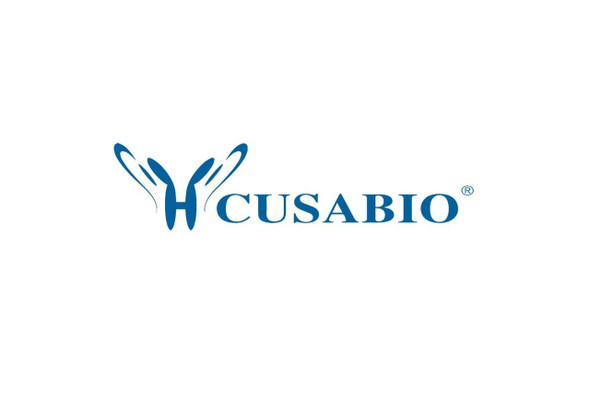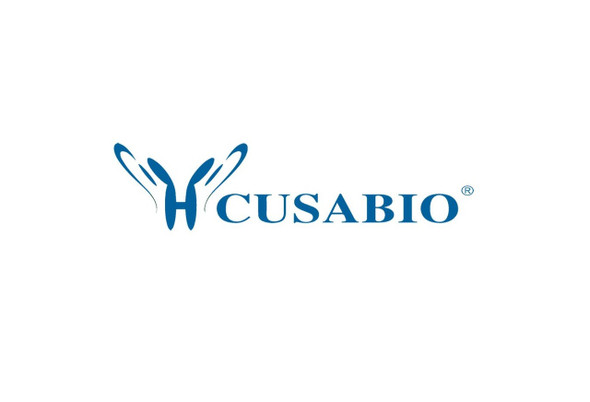Cusabio Human Recombinants
Recombinant Human Charged multivesicular body protein 4b (CHMP4B) | CSB-EP887976HU
- SKU:
- CSB-EP887976HU
- Availability:
- 13 - 23 Working Days
Description
Recombinant Human Charged multivesicular body protein 4b (CHMP4B) | CSB-EP887976HU | Cusabio
Alternative Name(s): Chromatin-modifying protein 4b
Gene Names: CHMP4B
Research Areas: Others
Organism: Homo sapiens (Human)
AA Sequence: SVFGKLFGAGGGKAGKGGPTPQEAIQRLRDTEEMLSKKQEFLEKKIEQELTAAKKHGTKNKRAALQALKRKKRYEKQLAQIDGTLSTIEFQREALENANTNTEVLKNMGYAAKAMKAAHDNMDIDKVDELMQDIADQQELAEEISTAISKPVGFGEEFDEDELMAELEELEQEELDKNLLEISGPETVPLPNVPSIALPSKPAKKKEEEDDDMKELENWAGSM
Source: E.coli
Tag Info: N-terminal GST-tagged
Expression Region: 1-224aa
Sequence Info: Full Length
MW: 51.8 kDa
Purity: Greater than 90% as determined by SDS-PAGE.
Relevance: Probable core component of the endosomal sorting required for transport complex III (ESCRT-III) which is involved in multivesicular bodies (MVBs) formation and sorting of endosomal cargo proteins into MVBs. MVBs contain intraluminal vesicles (ILVs) that are generated by invagination and scission from the limiting membrane of the endosome and mostly are delivered to lysosomes enabling degradation of membrane proteins, such as stimulated growth factor receptors, lysosomal enzymes and lipids. The MVB pathway appears to require the sequential function of ESCRT-O, -I,-II and -III complexes. ESCRT-III proteins mostly dissociate from the invaginating membrane before the ILV is released. The ESCRT machinery also functions in topologically equivalent membrane fission events, such as the terminal stages of cytokinesis. Together with SPAST, the ESCRT-III complex promotes nuclear envelope sealing and mitotic spindle disassembly during late anaphase. Plays a role in the endosomal sorting pathway. ESCRT-III proteins are believed to mediate the necessary vesicle extrusion and/or membrane fission activities, possibly in conjunction with the AAA ATPase VPS4. When overexpressed, membrane-assembled circular arrays of CHMP4B filaments can promote or stabilize negative curvature and outward budding. CHMP4A/B/C are required for the exosomal release of SDCBP, CD63 and syndecan The ESCRT machinery also functions in topologically equivalent membrane fission events, such as the budding of enveloped viruses (HIV-1 and other lentiviruses). Via its interaction with PDCD6IP involved in HIV-1 p6- and p9-dependent virus release.
Reference: "The ALG-2-interacting protein Alix associates with CHMP4b, a human homologue of yeast Snf7 that is involved in multivesicular body sorting." Katoh K., Shibata H., Suzuki H., Narai A., Ishidoh K., Kominami E., Yoshimori T., Maki M. J. Biol. Chem. 278:39104-39113(2003)
Storage: The shelf life is related to many factors, storage state, buffer ingredients, storage temperature and the stability of the protein itself. Generally, the shelf life of liquid form is 6 months at -20?/-80?. The shelf life of lyophilized form is 12 months at -20?/-80?.
Notes: Repeated freezing and thawing is not recommended. Store working aliquots at 4? for up to one week.
Function: Probable core component of the endosomal sorting required for transport complex III (ESCRT-III) which is involved in multivesicular bodies (MVBs) formation and sorting of endosomal cargo proteins into MVBs. MVBs contain intraluminal vesicles (ILVs) that are generated by invagination and scission from the limiting membrane of the endosome and mostly are delivered to lysosomes enabling degradation of membrane proteins, such as stimulated growth factor receptors, lysosomal enzymes and lipids. The MVB pathway appears to require the sequential function of ESCRT-O, -I,-II and -III complexes. ESCRT-III proteins mostly dissociate from the invaginating membrane before the ILV is released
Involvement in disease: Cataract 31, multiple types (CTRCT31)
Subcellular Location: Cytoplasm, cytosol, Late endosome membrane, Peripheral membrane protein, Midbody, Nucleus envelope
Protein Families: SNF7 family
Tissue Specificity: Widely expressed. Expressed at higher level in heart and skeletal muscle. Also expressed in brain, colon, thymus, spleen, kidney, liver, small intestine, placenta, lung and peripheral blood lymphocytes.
Paythway: Necroptosis
Form: Liquid or Lyophilized powder
Buffer: If the delivery form is liquid, the default storage buffer is Tris/PBS-based buffer, 5%-50% glycerol. If the delivery form is lyophilized powder, the buffer before lyophilization is Tris/PBS-based buffer, 6% Trehalose, pH 8.0.
Reconstitution: We recommend that this vial be briefly centrifuged prior to opening to bring the contents to the bottom. Please reconstitute protein in deionized sterile water to a concentration of 0.1-1.0 mg/mL.We recommend to add 5-50% of glycerol (final concentration) and aliquot for long-term storage at -20?/-80?. Our default final concentration of glycerol is 50%. Customers could use it as reference.
Uniprot ID: Q9H444
HGNC Database Link: HGNC
UniGene Database Link: UniGene
KEGG Database Link: KEGG
STRING Database Link: STRING
OMIM Database Link: OMIM










